My Vegetable Stir Fry is perfection! Made with fresh vegetables and the perfect stir fry sauce, this fantastic dinner is done from start to finish in just 30 minutes.
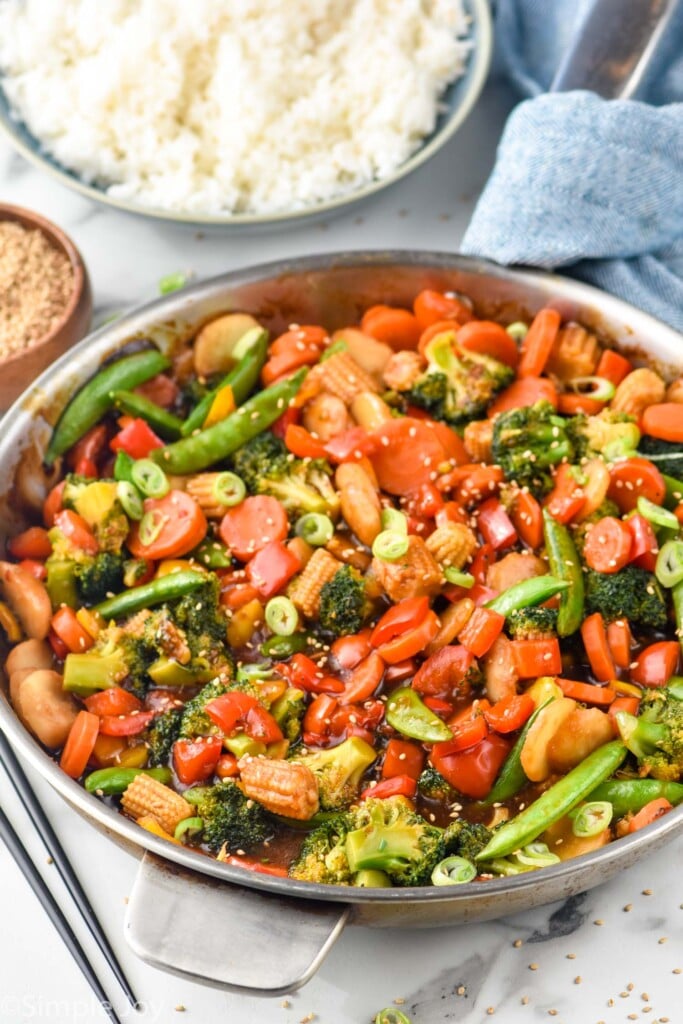
If you are looking to add more vegetarian recipes to your diet, let me introduce you to your next favorite dinner. This delicious stir fry is made with fresh vegetables. Even with all that chopping and prepping, you can still get this dinner on the table in just 30 minutes. You will drool over this mouth-watering recipe each time you hear those vegetables hit the pan and start to sizzle, just knowing the taste sensation that is coming your way.
How to Make Vegetable Stir Fry
Here is a brief overview of how to stir fry vegetables. For the full recipe including all measurements, see the recipe card at the bottom of the post.
- Cook the vegetables. Add the vegetables, except the snap peas, to a hot skillet. Stir and cook covered for five minutes.
- Add the other vegetables. Add in the sugar snap peas and cook for another minute or two. Then add in the baby corn and water chestnuts.
- Make the sauce. While the vegetables are cooking, mix together the ingredients for the sauce. When the vegetables are tender, pour the sauce over them. Continue cooking to allow the sauce to thicken, about one to two minutes. You will know the recipe is finished with the sauce has darkened in color and turned shiny.
- Serve and enjoy! Serve over rice while warm.
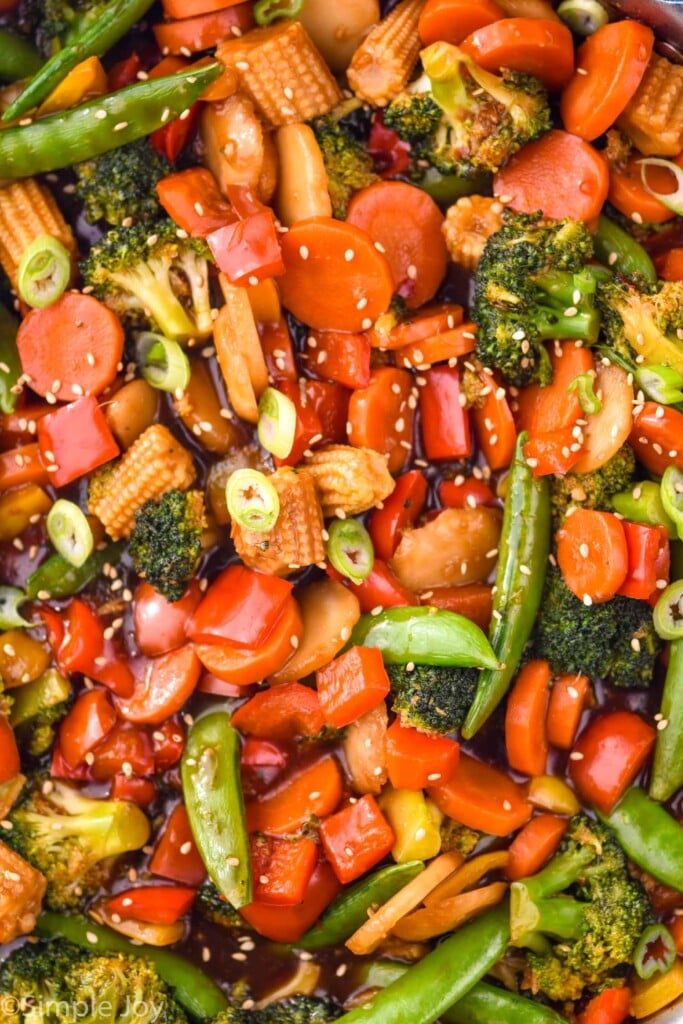
Vegetable Stir Fry Sauce
The delicious sauce that ties together all of my favorite stir fry recipes! Making your own sauce at home not only elevates the flavor but also gives you the power to adjust it exactly to your liking. It allows control over the levels of heat and sweetness, making sure the sauce perfectly complements your taste preferences and avoids added preservatives and additives of store-bought sauces.
Stir Fry Sauce
Stir Fry Sauce Ingredients
Here is what all makes up the vegetable stir fry sauce. For the measurements of each ingredient, refer to the recipe card at the bottom of this post.
- Teriyaki sauce: Forms the savory foundation of the stir fry sauce. While you can buy teriyaki sauce, I love to make my own. It is easy and so delicious. I share how to adjust the sauce for lower sugar, less sodium, and to be gluten-free.
- Soy sauce: A key flavor of stir fry, adding depth and saltiness to the sauce. Choose low-sodium soy sauce to allow better control over the salt levels. For a gluten-free stir fry sauce, be sure to use a gluten-free soy sauce.
- Hoisin sauce: Made from fermented soybeans, garlic, vinegar, and various spices, it adds a depth of flavor and tang to the sauce.
- Water: Adds to the base of the sauce without affecting the flavor.
- Garlic: Adds a delicious and savory flavor to the sauce that is amazing with the vegetables.
- Ginger: Introduces a zesty and bright kick. Read more about adding ginger to recipes below.
- Chili paste: Brings a hint of heat to the stir fry sauce. I share more about this ingredient that is made from hot chilies below. The level of spiciness can be adjusted to personal preference, adding a bold kick that balances the sweetness of the other ingredients.
- Cornstarch: Thickens the sauce and gives it a velvety consistency that perfectly coats the vegetables.
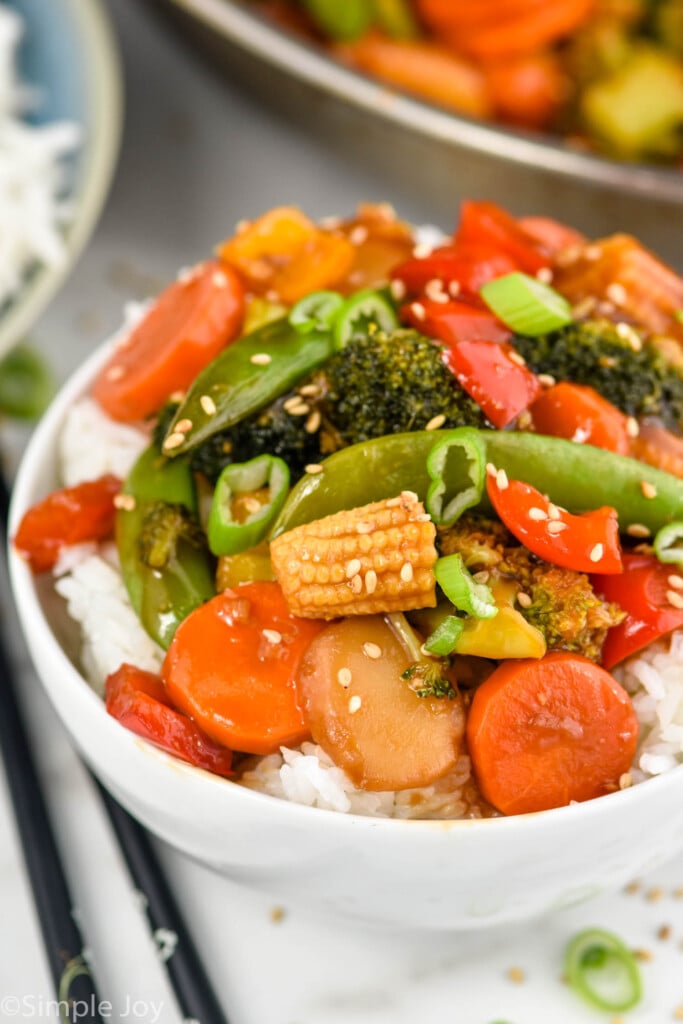
Cooking With Ginger
When a recipe calls for fresh ginger, you have two choices. You can get fresh ginger in its root form, peel it, and grate the desired amount using a zester. Any extra ginger root can be stored in the freezer for future use, allowing you to grate it directly into recipes even when it’s frozen.
Alternatively, you can opt for the tube-packaged ginger, which can be stored in your fridge. This is the route my family usually goes due to its convenience and extended shelf life. While it may not be as cost-effective, the tube provides a simple way to measure exactly what you need without wasting any.
Chili Paste
This condiment is made from hot chilies and adds a fantastic flavor profile to the sauce. Even though my preferred brand isn’t particularly spicy, if you’re wary of heat, I suggest starting with just one teaspoon. Give it a taste, and if you want more heat, add accordingly.
If you can’t find straight chili paste, there are some great chili sauces out there. It can typically be found in the international aisle of your local grocery store, or you can conveniently order it from Amazon.
Chili Paste
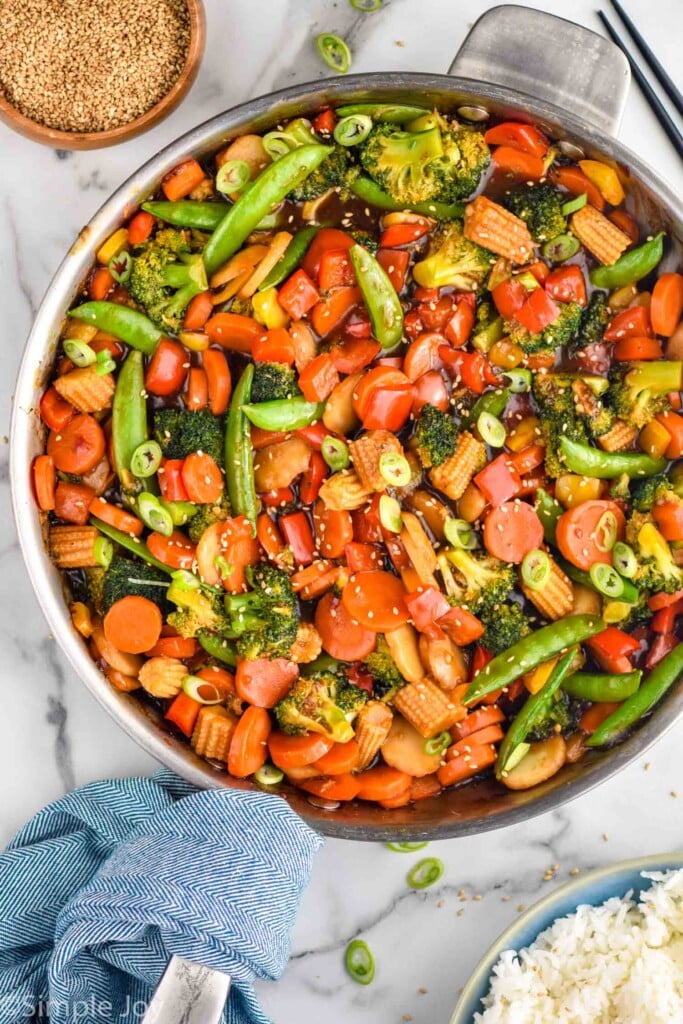
Stir Fry Vegetables
Stir fry recipes are super customizable which is part of what makes them so great, even for picky eaters! The best vegetables for stir fry are any that you and your family like. I include red and yellow bell peppers, carrots, broccoli, snap peas, and baby corn.
Stir fry can be easily customized to what you like and what you have on hand. Use vegetables that create a combination of colorful, crunchy, and versatile options which will result in a well-balanced and visually appealing dinner. If you don’t like or can’t find any of these, leave them out and replace them with a different vegetable or more of another vegetable.
We add the vegetables to the hot skillet in order of how they cook, so that everything is done around the same time and nothing gets overcooked and mushy. I recommend having your vegetables prepared (washed and diced) before starting the recipe so that things can move along quickly.
How to Serve
Serve your stir fried vegetables and sauce over a bed of cooked white or brown rice or noodles. For a lighter option, serve your vegetable stir fry over quinoa or cauliflower rice.
This stir fry can also be served as a flavorful side dish when served with a protein like chicken or shrimp. Sprinkle sesame seeds, chopped peanuts, cashews, or diced green onions over the stir fry just before serving to add a delightful crunch.
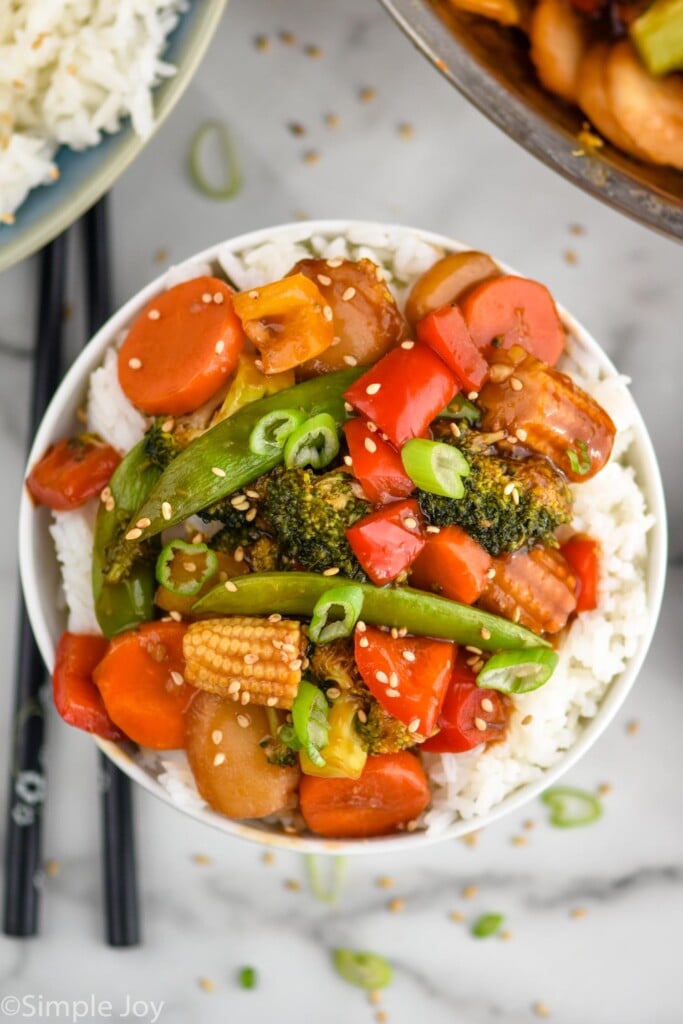
FAQ
You can totally add protein, but I would cut back on some of the vegetables so that there is enough sauce to coat everything. I have some great stir fry recipes with meat that I will link below.
Soy sauce contains gluten. To make this recipe gluten-free, use a gluten-free soy sauce variety. Always check your labels when cooking for someone who can’t have gluten.
Yes, but since these vegetables are already cooked, I recommend whisking together the ingredients for the sauce and combining it with the frozen vegetables. Cook until the sauce thickens and the vegetables are heated through.
Storing and Reheating Leftovers
Store any leftover vegetable stir fry in an airtight container in the refrigerator for up to three days. I recommend storing the vegetables and sauce together separately from the rice. Reheat only the portion you plan to eat and serve with fresh or reheated rice. Always use your best discretion when it comes to eating leftovers.
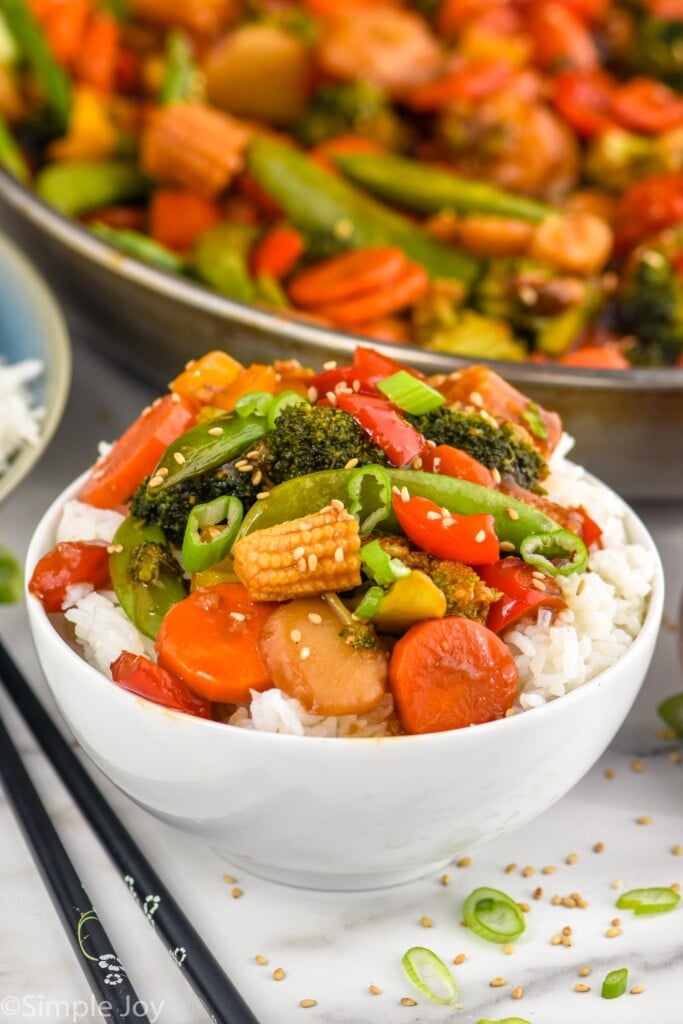
Other Stir Fry Recipes
If you are looking for other stir fry recipes or want to make this recipe with meat, here are a few great suggestions.
If you make this vegetable stir fry recipe or any of my other recipes, leave a comment and let me know what you think!
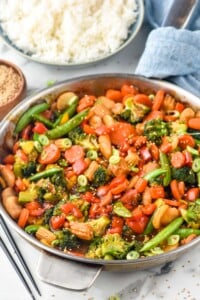
Vegetable Stir Fry
Ingredients
- 2 tablespoons olive oil
- 2 medium red bell peppers diced
- 1 medium yellow bell pepper diced
- 3 medium carrots peeled and cut into 1/4 inch slices
- 2 heads of broccoli cut into florets
- 1 cup sugar snap peas (117 grams)
- 1 cup baby corn drained (148 grams)
- 8 ounces sliced water chestnuts drained (227 grams undrained)
Sauce
- 1/2 cup water (118.3 ml)
- 1/2 cup teriyaki sauce (118.3 ml)
- 1/3 cup low sodium soy sauce (78.9 ml)
- 2 tablespoons hoisin sauce
- 4 cloves garlic
- 2 tablespoons ginger (or 1 to 2 inches freshly grated) read more about using ginger here.
- 2 teaspoons chili paste read more about chili paste here.
- 3 tablespoons cornstarch
Instructions
- Heat the olive oil in a large 12-inch skillet.2 tablespoons olive oil
- Add the vegetables, except the snap peas, to the skillet. Stir to combine. Cover and cook for 5 minutes, stirring once or twice. Add in the sugar snap peas, and continue cooking for another minute or two.2 medium red bell peppers, 1 medium yellow bell pepper, 3 medium carrots, 2 heads of broccoli, 1 cup sugar snap peas
- Add in the baby corn and water chestnuts.1 cup baby corn, 8 ounces sliced water chestnuts
- While the vegetables are cooking, mix together the ingredients for the sauce. When the vegetables are tender, pour the sauce over them. Continue cooking to allow the sauce to thicken, about 1 to 2 minutes. You will know the recipe is finished with the sauce has darkened in color and turned shiny.1/2 cup water, 1/2 cup teriyaki sauce, 1/3 cup low sodium soy sauce, 2 tablespoons hoisin sauce, 4 cloves garlic, 2 tablespoons ginger, 2 teaspoons chili paste, 3 tablespoons cornstarch
- Serve over rice.




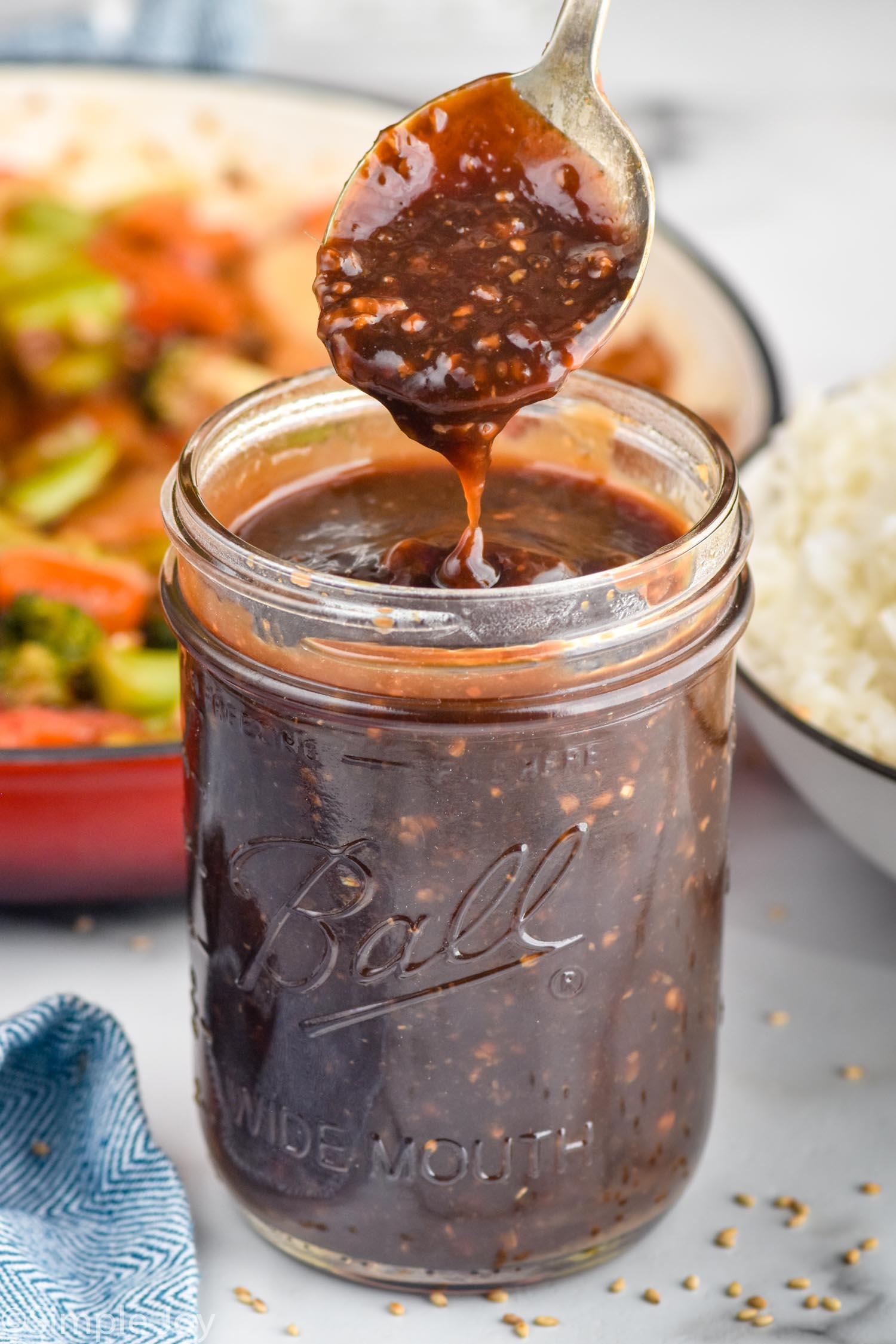
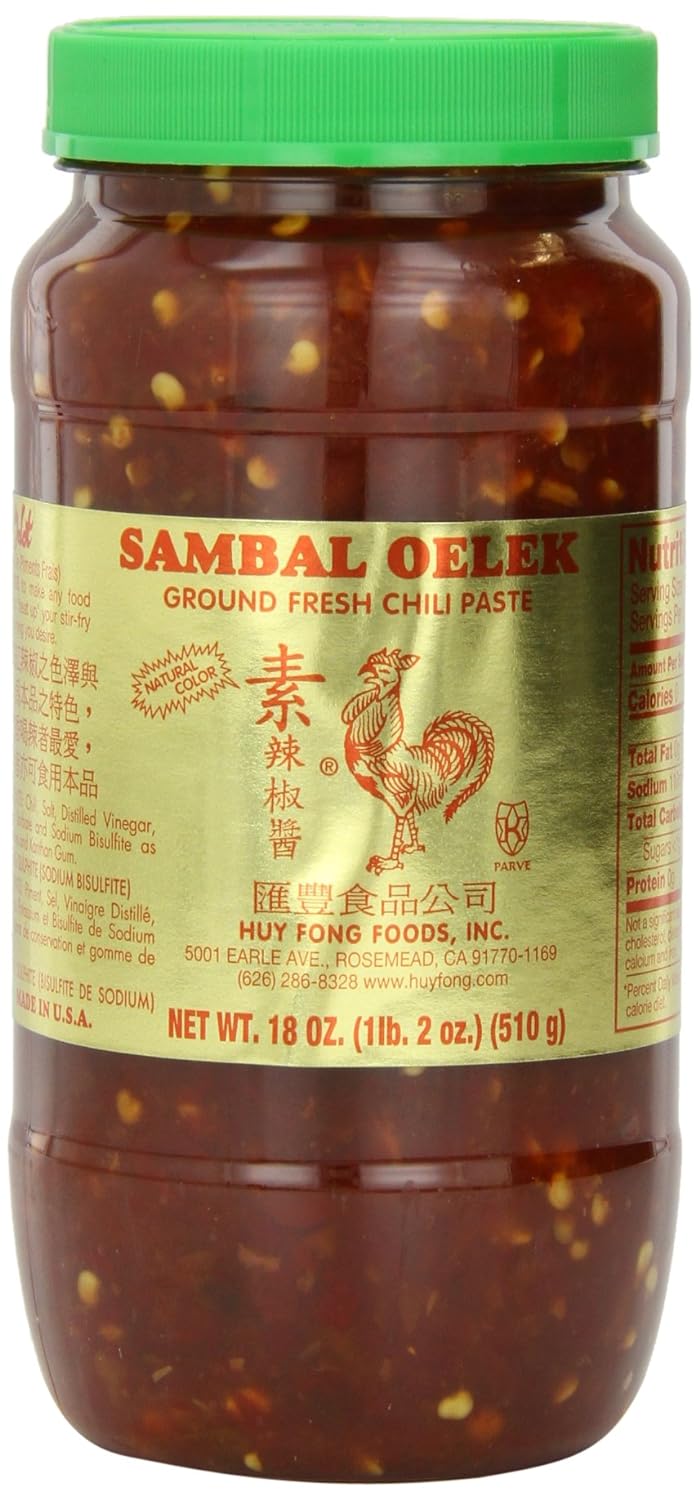
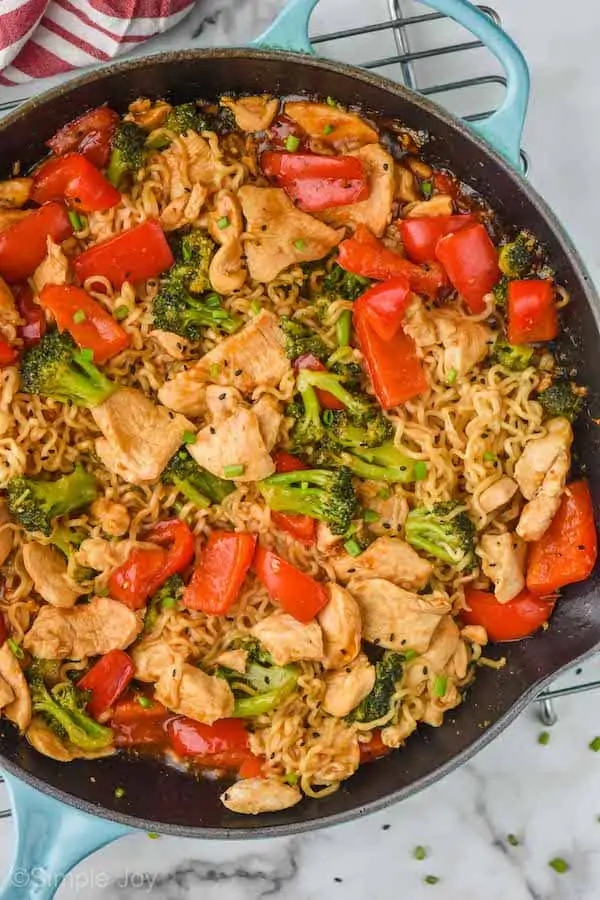
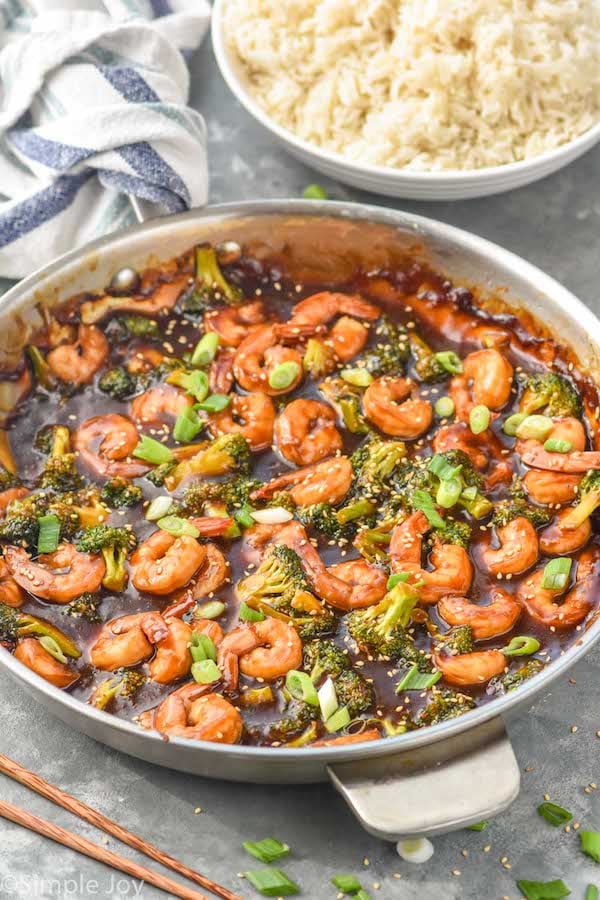
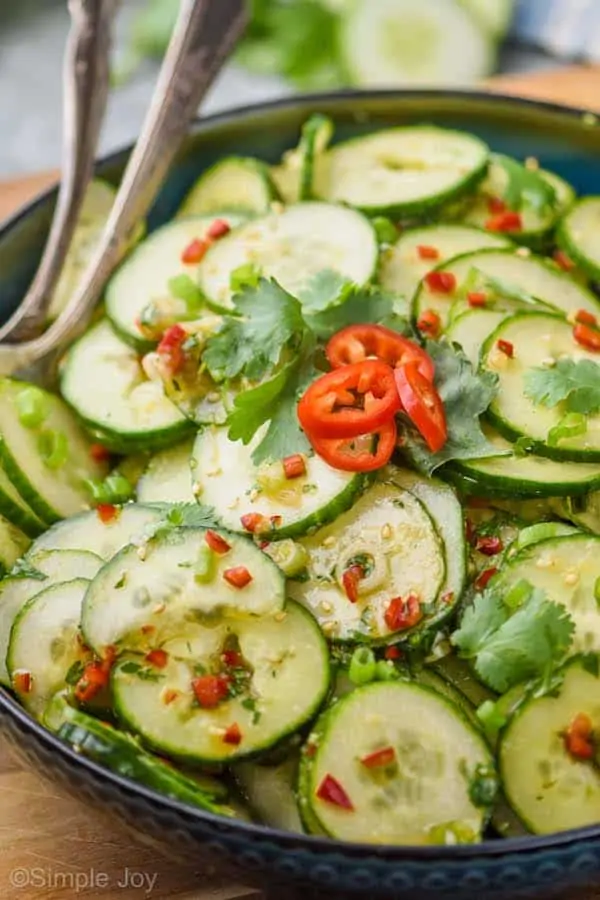
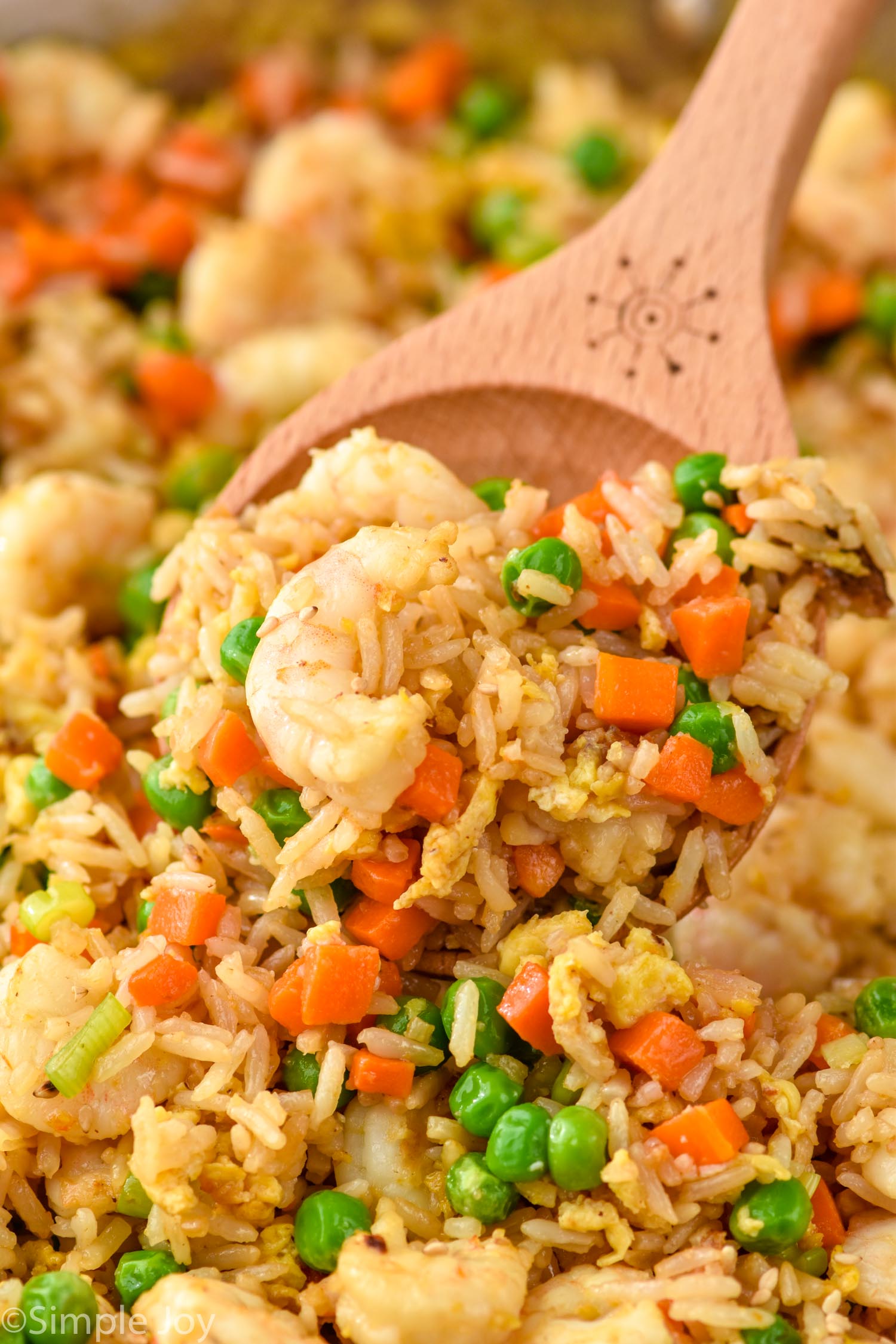


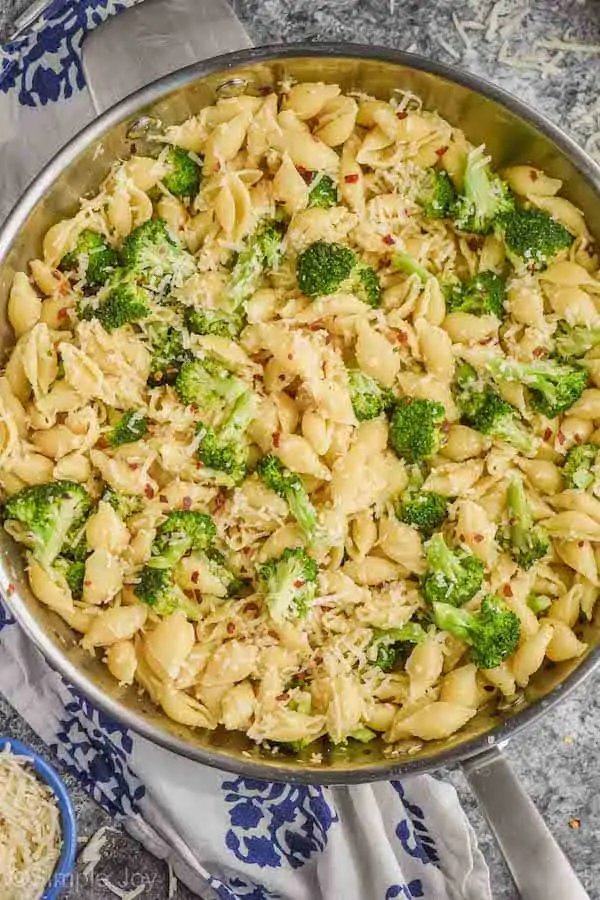
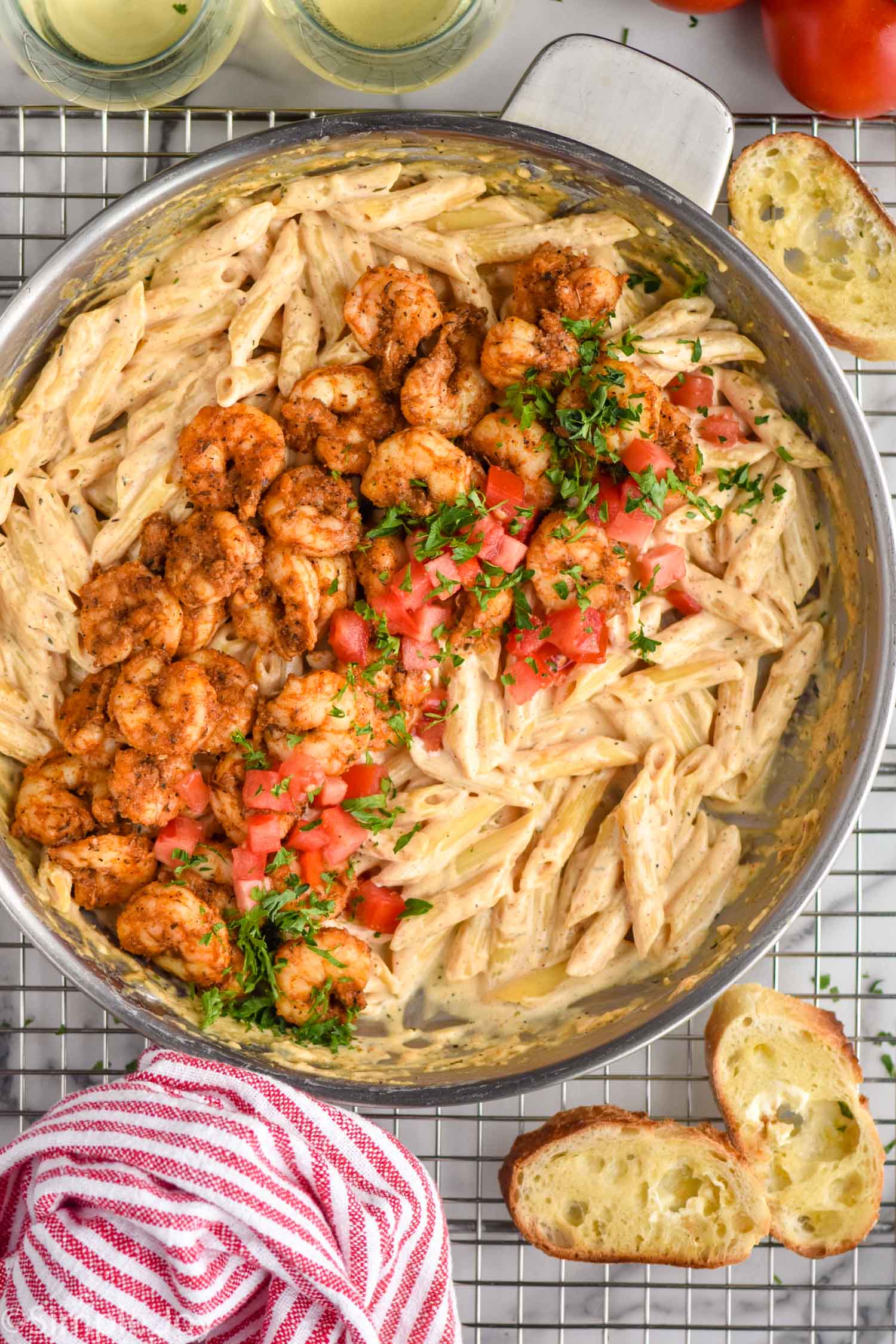
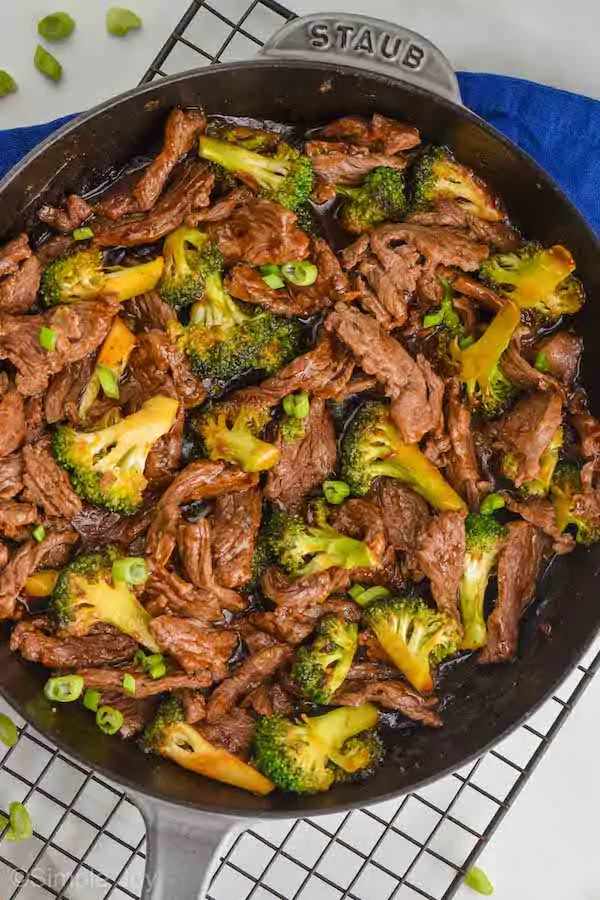






LEAVE A COMMENT